|
Visting the Khirbet Karta Ruins near Athlit
By David Prussman
I love going on tours in Israel. I go with my family or with friends
and I never really know where I am going to end up. Last week I went
with my wife to visit Athlit. Athlit was an important observation
point used by the Nili spy team in transferring data to the British
during World War I. I thought it would be interesting to visit and
see the actual place that the Aaronsohn family conducted parleys with
the British Intelligence that resulted in General Allenby's
successful rout of the Turkish army from Israel.

The Athlit Watch Tower can be seen in the distance. It was the place were the Nili spies would make contact with the British who would sail by. The British would send a small boat in to shore in the middle of the night to give gold coins to support the Jewish effort and in return would get detailed plans of the Turkish movements.
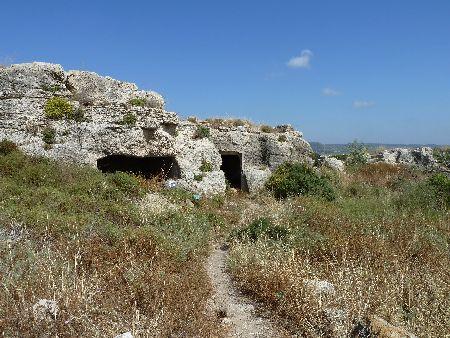
However when I arrived there I was saddened to find that it was a
closed military base – no visitors allowed. I could see it from
the distance, but that was it. So we decided that a kilometer or so
back there was something else of interest, the Athlit concentration
camp. This was the internment camp that the British, who after
liberating Palestine from the Turks, then turned against the Jews and
forbid immigration. Those Jews who were trying to save their lives
from Hitler's inferno in Europe tried to make it to the Land of
Israel and were captured by the fun loving British who interned them
in this camp until they could ship them out to some remote island,
somewhere, but not Palestine.
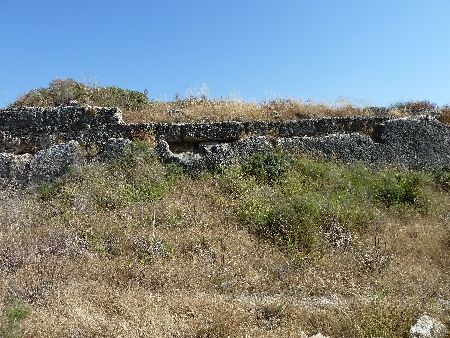
However as we approached the entry to the camp/museum, there came six
or seven tour buses loaded with young teenage and pre-teen children
to see this place. Seeing that they charged what I considered an
exorbitant price for entry combined with my fears of being overrun
over by masses of children, I opted for option number three: to visit
a unexplored ruin that lie between the Athlit internment camp and the
Athlit watch tower.
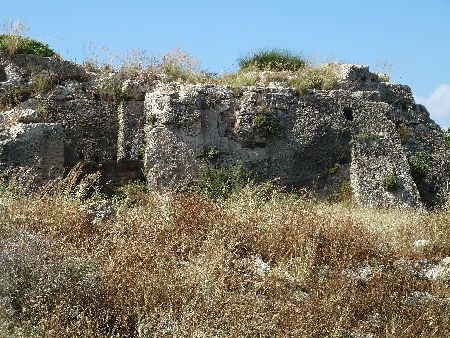
This site happens to be some ancient ruins that lie in its original
state. It is called Khirbet Karta and is almost unknown to
tourists. It has not been fenced off by the antiquities department
yet. I even found what seems like original traces of crusader
presence there in rusty beer cans. Joking aside, it faces the Atlit
watch tower and has a beautiful view of the sea. There is a small
parking lot with a tiny sign announcing that this is an archeological
site.
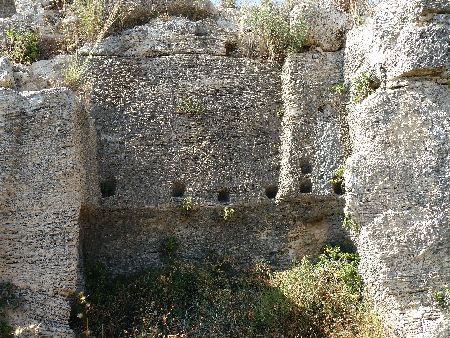
Khirbet Karta is the ruins of a Crusader fortress which
probably was built to protect the coastal road. From its lofty
vantage point you can see clearly the sea to the west, the coastal
plain where the ancient road was and also see the beautiful Carmel
mountain range to the east.

According to what I found out, the Crusaders built these ruins as a
castle and called it Districtum (catwalk) and in French –
Destroit The only bit of history I managed to dig up was that
robbers attacked the Crusader king Baldwin I (also known as Baudouin
I) who was considered the King of Jerusalem and his entourage in an
ambush in about 1103. During this attack the king was momentarily
taken captive but he escaped with his horse.
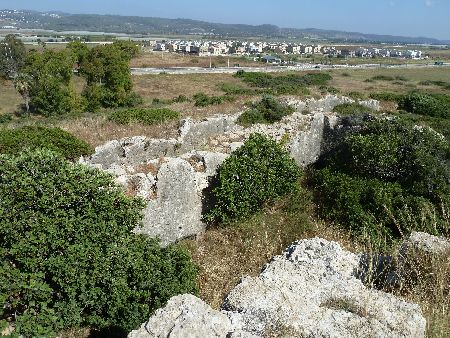
The name Khirbet is related to the Hebrew churvan,
meaning desolation or a destroyed place. Karta which is taken
from the Aramic and used today in modern Hebrew means city, which
this place does not really seem to have been. It was a fortress and
was abandoned on or about 1291 to the Muslim armies who have a long
history of destroying all property that they can destroy.
I hope that you enjoy my pictures and that you take the initiative to
visit.
* * * * *
For more articles on Ancient Jewish History, see our Ancient Jewish History Archives
For more articles on Israel & Archaeology, see our Israel & Archaeology Archives
~~~~~~~
from the July 2011 Edition of the Jewish Magazine
|
